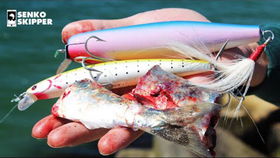Content:
The sea's horn, a term often used metaphorically to symbolize the vast and mysterious ocean, has long been a source of fascination for anglers around the world. Whether you're a seasoned pro or a beginner looking to cast your line into the deep blue, mastering the art of fishing with the sea's horn requires a blend of skill, patience, and a deep understanding of the marine environment. In this article, we'll delve into the essential techniques for fishing with the sea's horn, offering tips and tricks to help you hook the big one.
Understanding the Sea's Horn
Before we dive into the nitty-gritty of fishing techniques, it's important to understand the sea's horn itself. The ocean is a dynamic and ever-changing environment, influenced by a multitude of factors such as weather, tide, and water temperature. These factors can significantly impact the behavior of fish, making it crucial for anglers to be aware of them.
Choosing the Right Equipment
The first step in fishing with the sea's horn is to choose the right equipment. Here are some key pieces of gear you'll need:
Rod and Reel: Select a rod and reel that are appropriate for the type of fish you're targeting. For larger species, a heavy-duty setup will be necessary, while lighter tackle is ideal for smaller fish.
Line: The type of line you use depends on the fish you're after and the conditions you're fishing in. Monofilament, fluorocarbon, and braided lines all have their advantages and disadvantages, so it's important to choose the right one for your specific needs.
Hooks: Hooks come in various sizes and shapes, each designed to suit different types of fish. Research the species you're targeting and choose hooks that are appropriate for their size and feeding habits.
Lures and Bait: Lures mimic the movement of natural prey, while bait is used to attract fish. The choice between the two depends on personal preference and the specific fishing conditions.
Techniques for Successful Fishing
Now that you have the right equipment, it's time to learn some fishing techniques:
Reading the Water: Before casting your line, take a moment to observe the water. Look for signs of fish activity, such as splashes, bubbles, or surface disturbances. These can indicate the presence of fish in the area.

Timing Your Cast: The best time to cast is when the tide is moving, as this brings in nutrients and oxygen that attract fish. Pay attention to the tide charts and plan your fishing trips accordingly.
Presenting Your Bait or Lure: The way you present your bait or lure can make a significant difference in your success rate. Experiment with different retrieves, twitches, and pauses to see what works best for the fish you're targeting.
Setting the Hook: Once a fish takes your bait or lure, it's important to set the hook quickly and firmly. This can be done by reeling in quickly or by giving the rod a sharp pull.
Playing the Fish: Once you've hooked a fish, it's time to play it. Keep the line tight but avoid reeling in too quickly, as this can tire the fish and lead to a break-off. Instead, allow the fish to tire itself out while maintaining tension on the line.
Landing the Fish: When the fish is close to the boat, it's time to land it. Use a net to scoop the fish out of the water, or if you're skilled, you can land it by hand. Be gentle and respectful of the fish, as it's important to release it back into the water if it's not legal to keep.
Advanced Techniques
For those looking to take their fishing to the next level, here are some advanced techniques:
Trolling: Trolling involves dragging a lure or bait behind a moving boat. This technique can be effective for catching a variety of fish, including tuna, marlin, and salmon.
Jigging: Jigging involves quickly lifting and dropping a lure in the water to mimic the movement of a struggling prey. This technique is particularly effective for bottom-dwelling fish like flounder and bass.
Fly Fishing: Fly fishing is a specialized technique that involves casting a weighted fly rod and using artificial flies to attract fish. This method is popular for catching trout and salmon.
Night Fishing: Night fishing can be a unique and rewarding experience. Fish are often more active at night, so it's a great time to catch them. Use lights and specialized lures to attract nocturnal fish.
In conclusion, fishing with the sea's horn is an art that requires patience, practice, and a deep respect for the ocean. By understanding the marine environment, choosing the right equipment, and mastering the essential techniques, you'll be well on your way to becoming a proficient angler. Whether you're targeting the mighty marlin or the delicate trout, the sea's horn awaits your arrival, ready to reveal its secrets to those who dare to explore its depths. Happy fishing!












